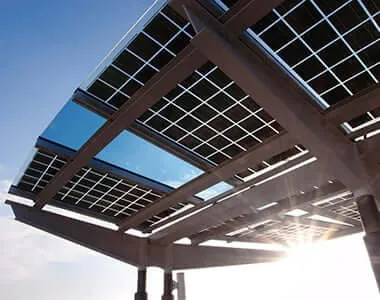Optimizing Solar Panel Installation with Efficient Mounting Systems and Innovative Designs
Understanding PV Mounting Systems Essential Frameworks for Solar Energy
As the world pivots towards renewable energy sources, photovoltaic (PV) technology stands out as one of the most promising solutions for harnessing solar power. Central to the efficiency and effectiveness of solar energy systems are PV mounting systems, which provide the essential support and structure for solar panels. This article explores the different types of PV mounting systems, their benefits, and the factors to consider when selecting a suitable system for solar installations.
Types of PV Mounting Systems
PV mounting systems can be broadly categorized into three main types fixed, tilt-up, and tracking systems.
1. Fixed Mounting Systems These are the most common type of PV mounting structures. They hold solar panels at a specific angle, optimizing their exposure to sunlight throughout the day. Fixed systems are often installed on rooftops, ground surfaces, or carports, providing a stable foundation for solar arrays. While they do not adjust to the sun's movement, fixed systems are generally less expensive and require less maintenance than their more advanced counterparts.
2. Tilt-Up Mounting Systems Tilt-up systems allow solar panels to be positioned at adjustable angles, enabling users to optimize solar exposure based on seasonal changes. By modifying the angle of the panels, tilt-up systems can significantly enhance energy production, especially in regions with varying sunlight conditions throughout the year. This flexibility can lead to higher energy efficiency and an improved return on investment.
3. Tracking Systems Among the most advanced PV mounting solutions, tracking systems are designed to follow the sun’s path across the sky. These systems can be single-axis or dual-axis, with dual-axis trackers allowing for vertical and horizontal adjustments. By continually aligning solar panels with the sun throughout the day, tracking systems can increase energy capture by 20-50% compared to fixed systems. However, they are also more complex, requiring additional maintenance and a higher initial investment.
Benefits of PV Mounting Systems
The primary benefit of PV mounting systems lies in their ability to ensure optimal positioning of solar panels, which directly impacts energy generation. Here are some key advantages
- Increased Energy Efficiency By properly orienting solar panels towards the sun, PV mounting systems maximize energy absorption throughout the day and across seasons.
- Durability and Stability High-quality mounting systems are constructed from robust materials designed to withstand harsh weather conditions. This ensures that solar arrays are secure, reducing the risk of damage from high winds, heavy snow, or other environmental factors.
pv mounting systems

- Adaptability Many mounting systems are versatile and can be adapted to various installation types, including residential, commercial, and utility-scale projects. This flexibility allows for optimized performance regardless of location.
- Reduced Installation Time Modern PV mounting solutions are typically designed for quick and easy installation, reducing labor costs and minimizing disruptions during the setup process
.Factors to Consider When Choosing a PV Mounting System
When selecting a PV mounting system, several factors should be taken into account
- Location and Climate The geographical location and local climate significantly influence the choice of mounting system. Areas with extreme weather conditions may require more robust systems.
- Budget and Cost-effectiveness Evaluating initial costs versus long-term benefits is critical. While tracking systems may offer higher returns, they also come with a steeper price tag.
- Space Availability The amount of available land or rooftop space will determine whether fixed, tilt-up, or tracking systems are most appropriate.
- Aesthetic Considerations For residential installations, the visual impact of the mounting system may be an important factor for homeowners.
Conclusion
PV mounting systems play a crucial role in the overall effectiveness of solar energy installations. By understanding the various types of mounting solutions available and their respective benefits, consumers can make informed decisions that maximize their investment in solar technology. As the demand for clean energy continues to rise, optimizing solar panel positioning will be key to achieving sustainable energy goals.
-
Unlocking Energy Freedom with the Off Grid Solar InverterNewsJun.06,2025
-
Unlock More Solar Power with a High-Efficiency Bifacial Solar PanelNewsJun.06,2025
-
Power Your Future with High-Efficiency Monocrystalline Solar PanelsNewsJun.06,2025
-
Next-Gen Solar Power Starts with Micro Solar InvertersNewsJun.06,2025
-
Harnessing Peak Efficiency with the On Grid Solar InverterNewsJun.06,2025
-
Discover Unmatched Efficiency with the Latest String Solar InverterNewsJun.06,2025







